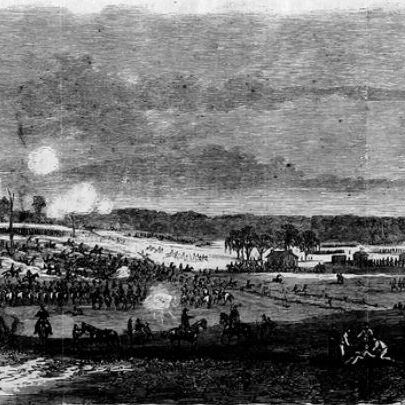In the heart of Louisiana, amidst dense woods and challenging terrain, a key battle unfolded – the Battle of Mansfield.
This historical clash, also known as the Battle of Sabine Crossroads, showcases strategic brilliance, unforeseen surprises, and the resilience of soldiers in the face of adversity.
In this article we delve into the events during the Battle of Mansfield and its significance within the wider Civil War conflict.
1. The Strategic Significance of Mansfield
By 1864, securing the Red River Valley had become a key strategic objective for the Union.
The valley offered access into eastern Texas and western Louisiana, both major cotton producers. It also contained vital supplies and livestock for Confederate armies operating in the Western theater.
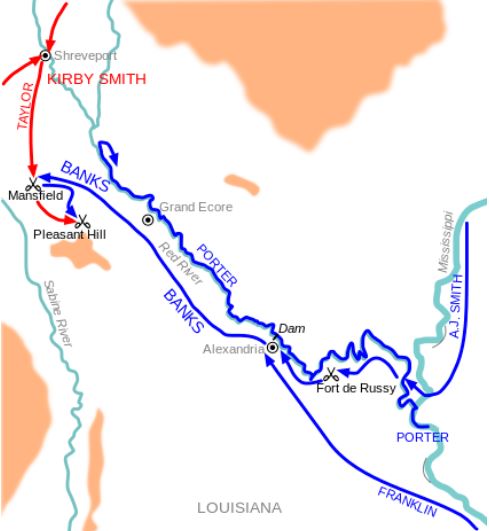
In March 1864, Major General Nathaniel Banks led a joint Army-Navy effort up the Red River towards Shreveport.
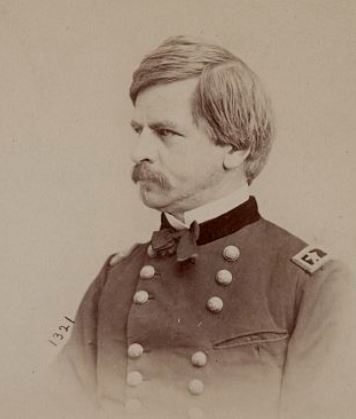
His goal was to destroy Confederate supplies in the region and continue pushing deeper into Louisiana. However, the Union naval fleet struggled with low river levels, stalling their advance.
Meanwhile, Confederate General Richard Taylor organized a mobile defense to resist Banks’ invasion.

Though outnumbered, Taylor aimed to halt the Union army somewhere along the Red River. Mansfield’s proximity to the river and its road junction made it an ideal place to mount an ambush.
As Banks’ Army continued its slow advance, Taylor prepared to concentrate his forces and make a stand.
The Confederates built earthworks and obstructed roads leading to Mansfield.
By April 8th, the armies collided, beginning the Battle of Mansfield.
2. The Opposing Forces at Mansfield
The Union Army
The Union forces at Mansfield were led by Major General Nathaniel Banks and consisted of around 20,000 men from the Army of the Gulf.
Banks’ objective was to advance up the Red River Valley and capture the Confederate stronghold of Shreveport, Louisiana. This would open up the Red River and provide a gateway into eastern Texas.
Under Banks’ command were seasoned officers like Brigadier General William H. Emory and Thomas Kilby Smith.
The Confederate Army
Facing Banks’ large Union army was a smaller Confederate force of around 9,000 men led by Major General Richard Taylor.
Taylor was an experienced cavalry commander who had achieved victories at Iberia and Irish Bend earlier in the war.
Though outnumbered, Taylor strategically positioned his men along the roads near Mansfield to block Banks’ supply lines.
Key Confederate officers under his command included Alfred Mouton and Major John G. Walker.
3. The Surprise Attack
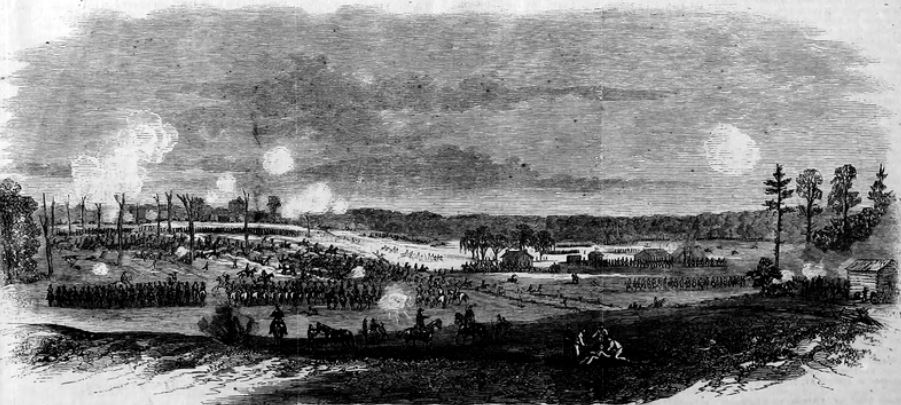
General Banks continued his advance towards Shreveport on April 8th, oblivious to the trap being laid ahead by Taylor’s Confederates.
The Union column stretched for miles along the single road through dense piney woods. Cavalry and the leading infantry brigades moved forward confidently after only skirmishing with Confederates pickets earlier.
However, Taylor had expertly hidden his main force just ahead along the road. He maneuvered his divisions behind undulating terrain, thickets, and fence lines, masking them from sight. The Confederates waited silently within striking distance, guns loaded and earthworks manned.
Due to faulty intelligence and poor coordination, Banks believed Taylor was still retreating. Union forces plodded straight into the vise completely unprepared. Taylor’s men held their fire until the Union column was nearly on top of them.
On Taylor’s signal, the woods erupted with artillery and the deafening roar of musket volleys. Walker’s division burst from cover right into the bewildered Union flank in a storm of lead.
Entire Union regiments were consumed by the frenzied Confederate assault.
The shocking ambush had pierced the leading Union brigades and thrown Banks’ advance into chaos within minutes. Farther down, the strung out Union column, soldiers could only halt and listen in dismay to the sounds of disaster unfolding ahead.
4. The Bloody Fight: Union Resilience Amidst the Chaos
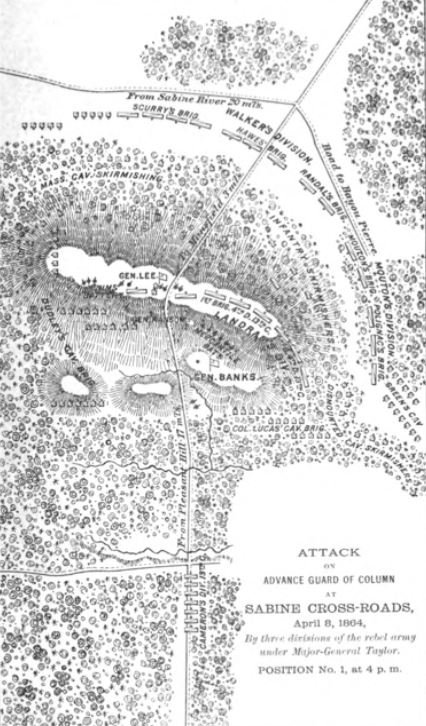
As musket fire reverberated through the dense woods of Mansfield, the Union forces found themselves thrust into a desperate struggle to regroup and hold their ground.
The surprise attack by General Richard Taylor’s Confederate forces had thrown them into disarray.
The woods, once seen as an impediment to Confederate movements, now transformed into a labyrinth where the cries of the wounded mingled with the constant drumming of artillery. The need to regroup became paramount, and Union officers, faced with the unexpected, worked tirelessly to instill a sense of order.
General Cameron’s Courageous Leadership
The leadership of General William H. T. Walker Cameron emerged as a beacon of courage and resolve.
Recognizing the gravity of the situation, Cameron rallied his troops with an unwavering determination. His voice cut through the smoke and chaos, urging his men to stand firm against the Confederate onslaught.
The Back-and-Forth Nature of the Battle
The Battle of Mansfield unfolded as a seesaw of fortunes, with control of the battlefield shifting unpredictably.
The dense underbrush and uneven terrain favored the defenders, but the Confederate forces, emboldened by their initial success, pressed the attack. The woods became a battleground where each tree and thicket served as cover for skirmishes.
The toll of battle was merciless, with mounting casualty count on both sides.
Each push and counter-push exacted a heavy toll. The wounded awaited aid, and the dead lay as silent witnesses to the ferocity of the engagement.
5. Confederate Victory: The Turning Tide at Mansfield
General Richard Taylor’s strategic maneuvers and steadfast leadership played tipped the scales in favor of the Confederates during the Battle of Mansfield.
As the day wore on, the Confederate forces continued to exploit the challenging terrain and pressed their advantage.
Taylor’s ability to maintain cohesion among his troops in the midst of the chaotic battle and adapt to the ever-changing circumstances demonstrated his strategic brilliance.
The Union forces found themselves compelled to retreat. The once-optimistic Red River Campaign, aimed at controlling the vital waterway and penetrating into Texas, now crumbled in the wake of the Confederate victory at Mansfield.
The retreat was not only a physical withdrawal but also a retreat from the ambitious goals set by the Union command. The abandoned aspirations of controlling the Red River dealt a significant blow to the Union war effort in the Western Theater.
The victory at Mansfield buoyed Confederate morale and had strategic implications beyond the immediate battlefield. It bolstered the belief that the Southern forces could effectively resist Union offensives and inspired confidence in their ability to defend their territory.
Following the Confederate victory at the Battle of Mansfield, the Union forces retreated overnight and took up a new position at Pleasant Hill the next day. The Battle of Pleasant Hill took place just about 24 hours after Mansfield. Confederate General Taylor pursued the retreating Union army and launched an attack in an attempt to completely destroy their forces.
6. Legacy and Significance
The Confederate victory at the Battle of Mansfield proved to be one of the most consequential engagements in the Western Theater of the Civil War.
It completely reversed the momentum of the Red River Campaign and rebuffed the Union’s advance into northwest Louisiana. .
Securing the Red River Valley was a key strategic priority for the Union to cripple the Trans-Mississippi economy and open a path to eastern Texas.
However, the humiliating defeat at Mansfield forced them to fully retreat back down the Red River in failure. The Confederates retained control of Louisiana and the vital supplies flowing from Texas, providing a lifeline for Confederate armies elsewhere.
In summary, Mansfield was a resounding Confederate success that prevented Union control of Louisiana and Texas.
Further Reading
If you enjoyed this article, you may be interested to read more about the battle of Pleasant Hill, Louisiana in the Civil War or other American Civil War events, such as battles in Maryland, North Carolina or more general American history.

